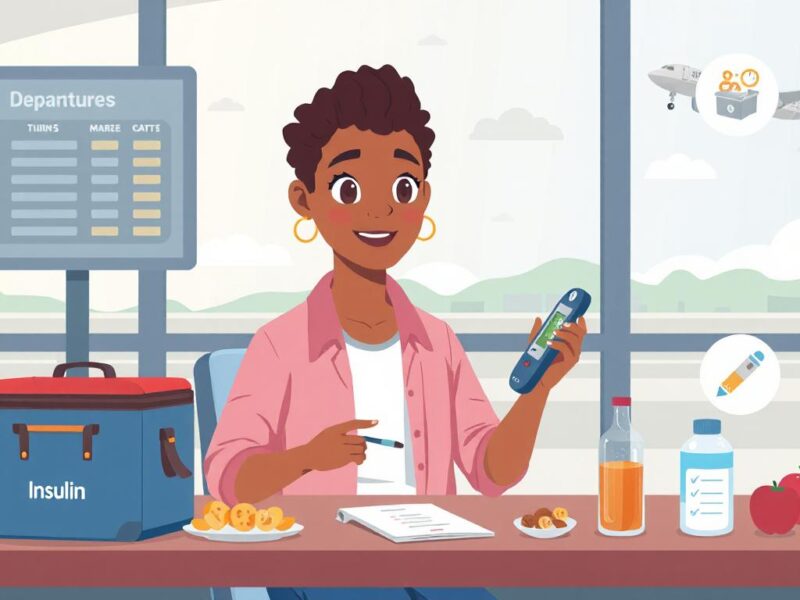Living with Diabetes: Understanding, Managing, and Thriving
Welcome to a journey into understanding diabetes—a condition that might arrive uninvited, but with awareness, adaptation, and self-care, it doesn’t have to take over your life. Think of diabetes like an unpredictable guest who overstays their welcome. Annoying, yes. But manageable? Absolutely.
Whether you’ve just been diagnosed, are supporting someone who has, or are simply curious, this guide breaks things down in everyday language. We’ll walk through the signs, types, risk factors, diagnosis methods, and ways to keep things under control—without sounding like a textbook.
The Basics: What Is Diabetes, Anyway?
To put it simply, diabetes messes with how your body handles sugar (glucose). Your cells need glucose for energy, and insulin—the hormone made by your pancreas—helps deliver it into those cells. But with diabetes, something in that system is off.
In some cases, your body isn’t making enough insulin. In others, your body doesn’t respond to insulin properly. Either way, glucose builds up in your bloodstream instead of fuelling your cells, which can cause problems over time if not managed.
How It Feels: Common Symptoms You Shouldn’t Ignore
Let’s talk about the red flags. These symptoms often sneak up on people, and many dismiss them as “just being tired” or “drinking more water lately.” But they’re worth paying attention to:
- Unquenchable thirst: No matter how much water you drink, you still feel parched.
- Frequent bathroom trips: Especially noticeable at night.
- Constant hunger: Even after eating a big meal.
- Sudden weight loss: Losing pounds without trying? That’s a concern.
- Fatigue: Feeling constantly drained, like your energy battery won’t charge.
- Blurry vision: Your eyes might feel like they’re out of focus.
- Slow-healing cuts or infections: Your body takes longer to recover.
- Tingling or numbness: Especially in your hands or feet.
These symptoms can show up subtly or strike hard. Either way, if something feels “off,” it’s time to talk to a doctor.
Knowing the Types: Not All Diabetes Is the Same
Diabetes isn’t a one-size-fits-all condition. In fact, there are several variations, each with its own causes and management methods. Here’s a breakdown that won’t leave you scratching your head:
Type 1 Diabetes: The Autoimmune Surprise
This type usually shows up in childhood or early adulthood. Here, your immune system mistakenly attacks the insulin-producing cells in your pancreas. It’s not caused by lifestyle, and there’s currently no way to prevent it.
- Treatment: Daily insulin injections or an insulin pump.
- Reality Check: This form requires constant attention, but with the right tools and support, people with Type 1 live active, full lives.
Type 2 Diabetes: The Lifestyle-Linked Variant
Type 2 is the most common. It typically develops over time, especially in adults, but younger people—including teens—are being diagnosed more frequently due to lifestyle changes.
- What Happens: Your body either doesn’t make enough insulin or doesn’t use it efficiently.
- Management: Diet changes, exercise, weight control, and sometimes medications.
- Good News: In some cases, lifestyle improvements can reverse early stages of this type.
Gestational Diabetes: The Pregnancy Curveball
Some women develop diabetes during pregnancy. Hormonal changes can interfere with insulin, leading to high blood sugar levels.
- The Catch: It usually goes away after birth but increases the mom’s risk of developing type 2 diabetes later.
- Tip: Keep up with postpartum check-ups and healthy habits.
Playing Detective: What Increases Your Risk?
Not everyone develops diabetes for the same reason. Some risk factors are within your control, while others are not. Knowing them helps you take proactive steps.
- Family Ties: If close relatives have diabetes, your risk is higher.
- Weight Gain: Extra body fat, especially around the belly, can increase insulin resistance.
- Poor Diet: A steady stream of sugary drinks, fried foods, and ultra-processed snacks can throw your body off balance.
- Lack of Movement: Sitting too much? That sluggish lifestyle slows down your metabolism.
- Age: As you age—especially after 45—your risk increases.
- Ethnicity: Some groups (including South Asians, African Americans, and Hispanics) are genetically more susceptible.
No single factor causes diabetes, but when several come together, the odds go up. The more aware you are, the better prepared you’ll be to make healthier choices.
Why Early Detection Saves Lives (and Toes)
Catching diabetes early can seriously change the game. Think of it like finding a leak in your roof before a storm hits—it’s easier to patch up and way cheaper than fixing the whole ceiling.
Here’s why early detection matters:
- Preventing complications: High blood sugar over time can damage your eyes, kidneys, nerves, and heart.
- Better management: The sooner you start making changes, the easier it is to get things under control.
- Peace of mind: Knowing where you stand helps you plan, not panic.
Screening might involve a simple blood test, especially if you’re at risk or showing symptoms. The earlier you know, the more options you have.
The Screening Process: What Tests Tell the Story?
You don’t need to guess whether you have diabetes. A few common medical tests can give you—and your doctor—a clear picture.
- Fasting Blood Sugar Test: Measures your blood glucose after 8+ hours without food.
- A1C Test: Gives a snapshot of your average blood sugar over the last 2–3 months.
- Oral Glucose Tolerance Test: Often used in pregnancy, this measures how your body handles sugar over a few hours.
- Random Blood Sugar Test: Useful in urgent situations or if symptoms are strong.
Regular check-ups can catch diabetes in its early stages—sometimes even before it fully develops (a stage called prediabetes).
Living with Diabetes: How to Take Control (Not Just Cope)
Once you’ve been diagnosed, it’s natural to feel overwhelmed. But managing diabetes doesn’t mean living in a bubble. It’s about creating a life where your condition fits into your routine—not the other way around.
- Build a Balanced Plate
- Focus on whole foods: veggies, lean protein, whole grains, and healthy fats.
- Cut back on added sugar and processed snacks.
- Don’t fear carbs—just learn to choose the right kinds and portions.
Pro tip: A nutritionist can help you customize a meal plan that works for you.
- Move That Body
Physical activity helps your body use insulin better. You don’t need to run marathons. Even walking 30 minutes a day can help regulate your sugar levels.
Mix it up:
- Strength training a few times a week
- Yoga or stretching to stay flexible
- Dance, bike rides, or sports for fun
- Check In with Your Numbers
Monitoring your blood sugar helps you understand how food, activity, and stress affect your levels. Over time, you’ll see patterns and be better equipped to respond.
Devices range from traditional finger-prick meters to continuous glucose monitors (CGMs). Your doctor will help you find the right fit.
- Stick to Your Meds (If Prescribed)
Some people with diabetes need insulin, pills, or other treatments to help their bodies manage blood sugar. Skipping doses or stopping meds without guidance can be dangerous.
Open conversations with your healthcare provider are key. Adjustments might be needed based on how your body responds over time.
Your Support Squad: You’re Not in This Alone
Managing diabetes isn’t just a solo mission. Building a support system can make a world of difference. Here’s who to include:
- Primary Care Physician: Your go-to for general health and diabetes management.
- Endocrinologist: A specialist who focuses on hormonal issues like diabetes.
- Dietitian/Nutritionist: Helps tailor meal plans to your goals and preferences.
- Diabetes Educator: Offers guidance on lifestyle changes, devices, and daily routines.
- Support Groups or Communities: Whether online or in-person, sharing experiences helps.
Don’t be afraid to lean on your circle of friends and family, either. Educating those helps they support you better.
Thriving With Diabetes: Real Talk and Encouragement
There’s no sugar-coating it—living with diabetes requires effort. But it’s not a life sentence of limitations. Many people with diabetes run marathons, climb mountains, start families, and chase their dreams every day.
Take it from Sarah, who was diagnosed with type 2 diabetes at 37. At first, she panicked. But once she started walking daily, swapped fast food for home-cooked meals, and found a community online, her numbers improved—and so did her confidence. “It’s not about perfection,” she says. “It’s about progress.”
Final Thoughts: It’s a Marathon, Not a Sprint
Diabetes is one of those conditions that’s as much about the mind as it is the body. There will be great days and tough ones. The key? Stay curious, be kind to yourself, and keep moving forward.
And remember – small changes add up. Swapping sugary drinks for water, adding veggies to one extra meal a day, or walking around the block instead of scrolling on your phone all make a difference over time.
Knowledge is power, but action is everything. You’ve got this.


